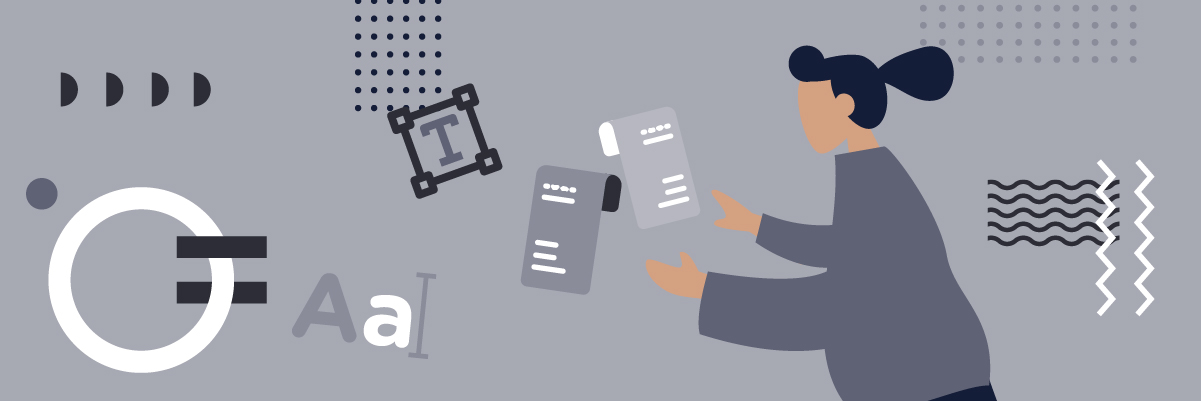Transcription is one of those things that can benefit your brand our business enormously. And not just that, it can also help your end-users enjoy a much deeper connection with your content. Coupled with that, there are myriad benefits you should definitely get to know to be a competitive online force. That’s why today, I’ll ask “What is the purpose of transcription?” and attempt to answer the question comprehensively.
Now, there’s no one-size-fits-all transcription style either, so it’s important to define these terms. There’s:
- Edited transcription — quality is the focus, and not a 1/1 transcription.
- Full verbatim transcription — a word-for-word copy of speech into text, warts and all.
- Intelligent transcription — closer to verbatim, but removing extraneous sounds and stutters. The idea is to omit any unnecessary fragments.
And then, there’s the matter of knowing what type of industry you’re going to be using transcription for. To understand “what is the purpose of transcription,” we need to also learn why and how to apply it. While I’ll go ahead and mention different styles, the main focus of this piece will be video transcription and its many, many benefits.
What’s the main one? Being found by more, and higher-quality users, which frequently has a net-positive effect on conversions. But there’s also accessibility, and providing a clearer final product for your viewers/readers.
Let’s take a deeper look.
This post has been updated in September 2021.
What Is the Purpose of Transcription? Defining the Basics.
We’re transcription experts at Bunny Studio and aren’t exactly shy about it. But what expert worth their salt would hide behind jargon or oblique language? Personally, I believe in making it easy for you, so here’s a definition from this article from our very own library:
Transcription is the process of converting speech or audio into a written text. It is used when it is necessary to convert audio-only programs on radio or podcasts for people who perhaps are deaf, for example.
(…) There are two main types of transcription too: verbatim and clean-read transcriptions. Verbatim basically means transcribing a text word by word. This includes, naturally, all that a speaker is saying, including words such as “um”, mistakes, slang words which are not easily understandable by a listener etc. A clean-read, on the other hand, is a transcription that excludes these errors and fillers.
Transcription, as it pertains to video, is also part of the world of closed captions. But let’s not get ahead of ourselves! First things first, so let’s check out the ways in which you can deploy transcription.
It’s All in the Intention
Transcription, as it’s frequently known, arises in places like high-stress legal, medical, or professional environments. People love to talk, but frequently their words have professional (and often financial or legal) weight and ramifications. That’s why having a clear, word-for-word transcription of events is often crucial. In these cases, authenticity and clarity offer the only roads to success. A missed word or a badly placed comma can completely distort the final meaning.
And that’s the province of full verbatim transcription. Even stutters have their place in communication! For instance, somebody on the witness stand who keeps stuttering and contradicting themselves is most likely not telling the truth or has something to hide. Transcriptions need to convey the full nine yards of human language. Understanding what is the purpose of transcription means understanding context.
Of course, this also applies to meeting minutes, or other high-stakes situations as well. The medical industry often has to employ transcriptionists as part of a larger legal and ethical framework.
And then, there’s the frequent use of intelligent transcription in video marketing. This is intimately linked to the world of subtitles and closed captions. But, while subtitles are frequently in different languages, transcriptions are in the same language as the original audio. Therefore, they can often kickstart the process of subtitling into other languages. Moreover, they provide support for the hard-of-hearing, and people with other disabilities.
Edited transcriptions also have their place, of course, but we’ll mention those later.
What is The Purpose of Transcription for Video?
We’ve finally come to the meat of the issue at hand. Did you know that most of the traffic on the internet is video? By 2022, video will make up a staggering 82% of all internet traffic. Now, if that statistic doesn’t give you pause, it definitely should. It figures, too, considering that humans are primarily visual creatures. As technology continues to expand and evolve, content also tends to become more visual.
But visuals aren’t the be-all-end-all. We still need to listen and understand the content we’re watching. And, in our fast-paced, multi-tasking environment, that isn’t always a given. What are companies and individuals to do in this situation? Ask themselves “what is the purpose of transcription for video?”
It is to increase engagement, information retention, bring in more users, and boost SEO. What’s SEO? It’s short for Search Engine Optimization and encapsulates a variety of techniques that aim to improve your content’s standing in online search queries. Basically, it means optimizing your content in a way that makes more users come to you organically, and in a way that makes sense for your business and your content. Transcriptions can definitely help you with this in a near-invisible, but all-important way.
How? Let’s list ’em off!

Traffic
What is the purpose of transcription? First off, to increase your overall traffic through internet searches. Regardless of whether you have a hit podcast, YouTube series, or just a few explainer videos about your hit product, transcripts can broaden your audience significantly. How do they achieve this?
It turns out that Google doesn’t index video or audio content. So, regardless of how great your content is, search engines are pretty much blind to it, or at least until we get better tech, which could be a ways off. For now, it’s up to teams of human transcriptionists to turn your content into text. The result is that you’ve now let search engines “read” your content, and thus becoming more visible. Therefore, you’ll be able to rank higher in searches that show you appear among relevant terms.
Take into account, for instance, the structure of a news article. Google indexes the title, byline, and body, but if you’ve got a video, it’ll just index the title. Oh, and by the way, you can also create translations from your transcriptions. Meaning, you’ll get found in multi-language searches, which means having content that works for you several times over.
What type of transcription will you use? Mostly edited and intelligent, of course. You should aim for the highest-quality possible transcriptions.
Money
In the end, the other answer to “What is the purpose of transcription?” is money. Sites with transcribed audio make, on average, a whopping 16% more than those that don’t. That’s definitely a cost-effective whammy.
Engagement
In the end, what do you care about the most when you produce content? If I were a betting man, I’d say that it’s wanting to engage your audience. In our article about Spanish transcriptions, I wrote:
Ever spent a lazy afternoon scrolling through social media? You and me both! But if there’s something that we don’t do often is unmute those pesky videos that appear on our feed, unless they’re really, really interested. Whether you’re making content for YouTube, Facebook, Instagram, or another social media platform, people tend to appreciate captions. Why? Because over 85% of us watch those videos on mute and decide whether we want to listen to them after reading the captions for a bit.
Not only that, but there’s the aforementioned benefit for hard-of-hearing folk, and those who can’t unmute videos do to, say, being on the bus. On average, transcribed/captioned videos tend to get an increase in views around 8%. Facebook did their own research on the matter, and they found a whopping 12% increase! I don’t want to put ideas into your head, but maybe you should get crackin’!
There’s really no arguing with those numbers.
Off-Page SEO
Proper indexing by Google also helps by making your users reach you through terms that actually make sense for your industry. Transcriptions can help you out immensely with this because people will find you in ways that actually reflect the content you’ve already put out.
So, What is The Purpose of Transcription?
It depends on your needs, really. Much like the meaning of life, it’s in the eye of the beholder. But, if you’re online, and want to increase your online presence, transcriptions can be a huge boon for you. When it comes to cost-effective solutions that make your content more attractive, sell better, and capture the hearts and minds of your audience more, nothing has a transcription beat.
Couple that with effective content translation and branding, and you’re golden. But then, there’s the difficult part of choosing the right service for you. And whether you need legal, medical, professional, or video transcription, trust is the name of the game.
That’s why I recommend you go with Bunny Studio for all of your transcription needs. If you need certified, capable transcriptionists that can help you out with every aspect of translation, Bunny Studio has all other online services beat. We offer vetted, high-quality professionals that know transcription inside and out and can liaise with other departments in our company, offering access to qualified pros in the translation, design, voice-over, video, and audio engineering fields, among others. We’re all about turnkey creative solutions made easy, and put a premium on quality, speed, and client satisfaction.
So, if you’re ready to hire the best, let us know! Chat with our Bunny Studio staff today, and we’ll help you out with whatever you need. We’re ready to wow you!











